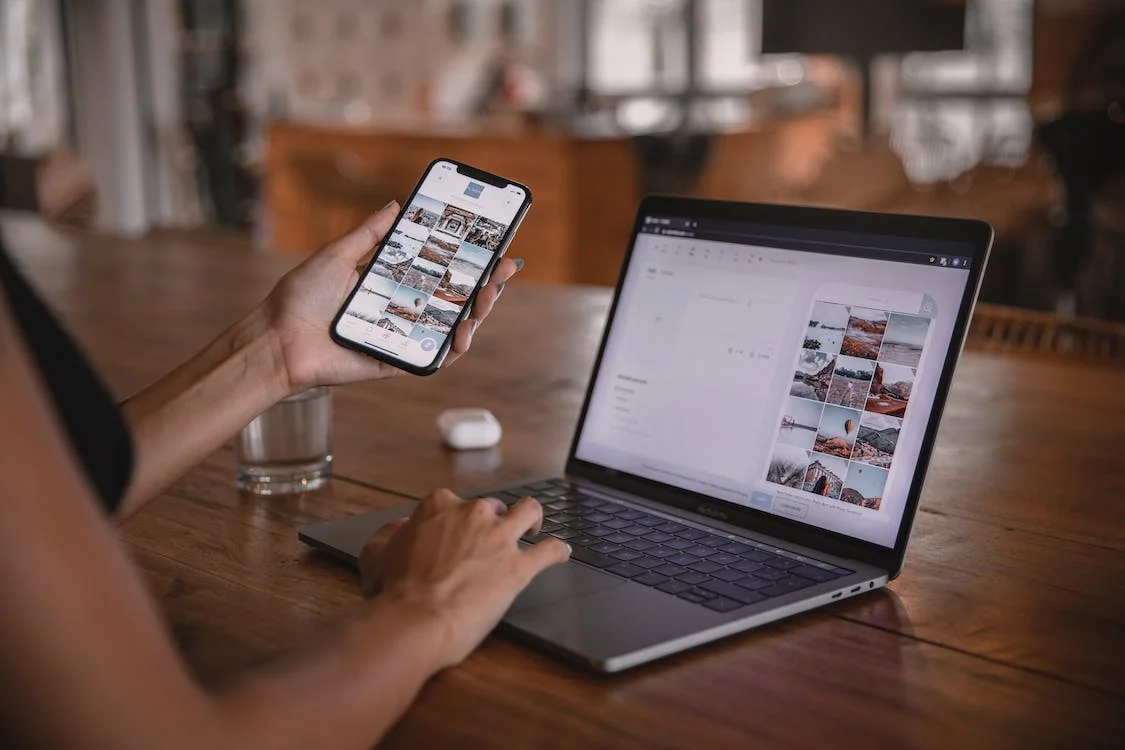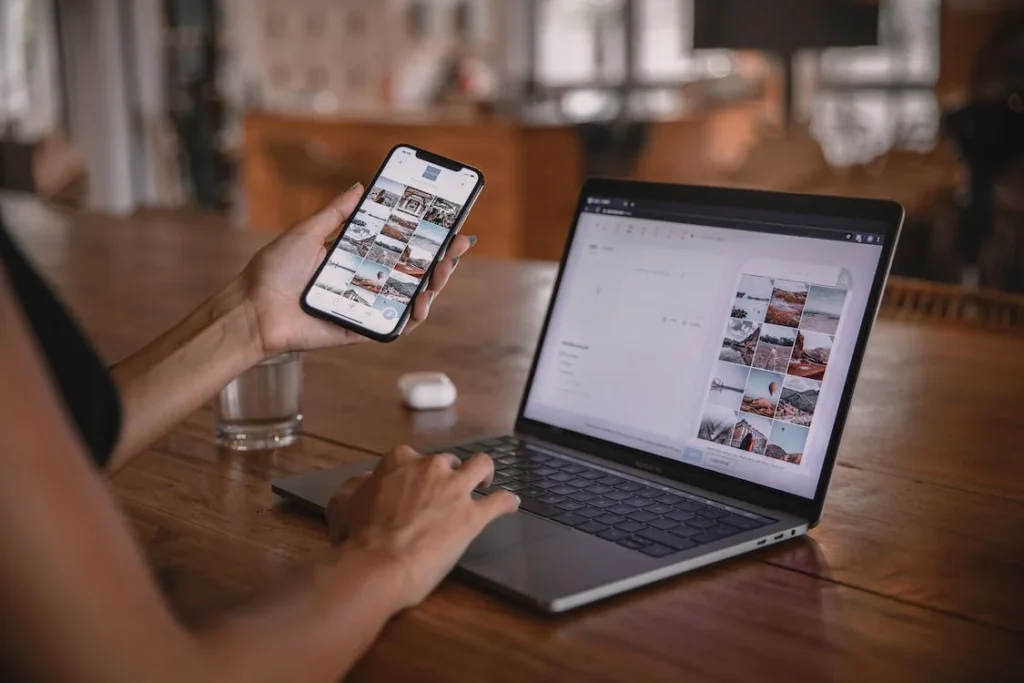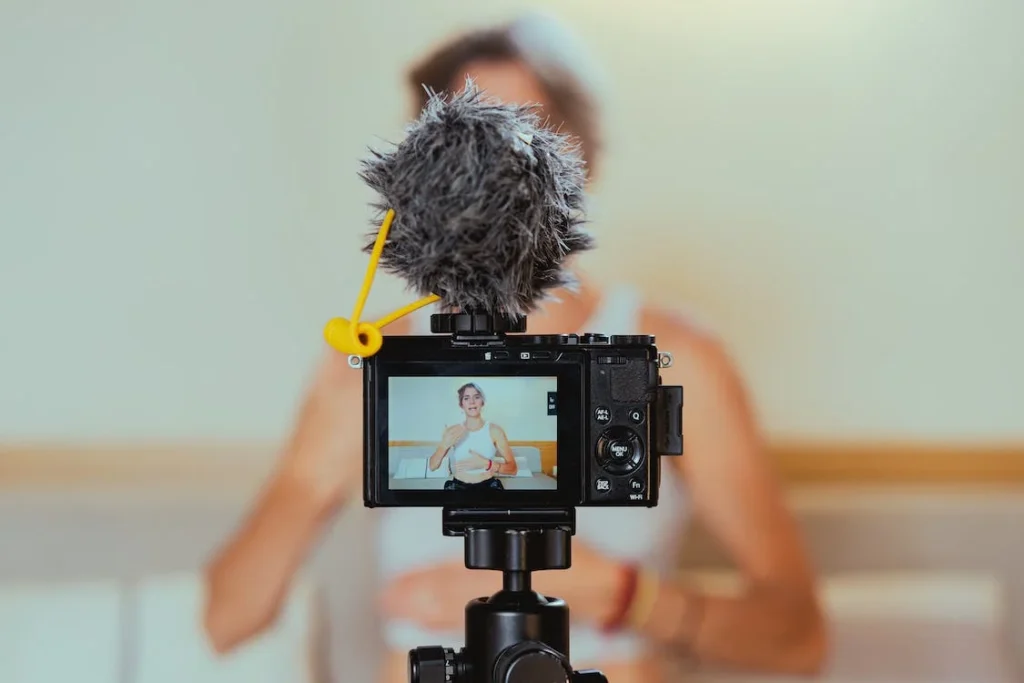This Article has been revised, edited and added to, by Poulomi Chakraborty.
- The Power of Influence: Bloggers vs. Traditional Celebrities
- Identifying and Approaching the Right Influencers for Collaboration
- Structuring Effective Collaborative Campaigns
- Set Clear Objectives and Expectations
- Creative Campaign Ideas
- Communicate Throughout the Campaign
- Analyze and Learn from the Campaign
- Integrating Influencers into the Brand Story
- Utilizing Multi-Channel Engagement
- Creating Interactive and Immersive Experiences
- Leveraging Data for Dynamic Campaign Adaptation
- Establishing Clear Communication and Feedback Loops
- Maintaining Long-Term Relationships with Influencers
- Conclusion
Welcome to the bustling world of influencer marketing! As a blogger, harnessing the power of collaborations and partnerships isn’t just about boosting your visitor numbers—it’s about creating an engaging, vibrant community around your content. Whether you’re a seasoned blogger or just starting out, understanding how to effectively collaborate with influencers can transform your blog from a solitary endeavor into a dynamic force. Let’s dive into how you can leverage these relationships to drive traffic and elevate your online presence.
The Power of Influence: Bloggers vs. Traditional Celebrities
In the digital age, the concept of influence has evolved. Traditionally, celebrities were the go-to for brand endorsements, given their massive followings and widespread appeal.
However, the rise of social media has birthed a new wave of influencers: bloggers, YouTubers, and Instagram stars, who often hold sway over more niche, but highly engaged audiences. This shift presents a unique opportunity for bloggers looking to expand their reach through influencer marketing.
Reach and Engagement: Numbers vs. Interaction
Celebrities typically boast large followings, which can seem like a marketer’s dream. However, bigger isn’t always better. While celebrities can reach millions, their engagement rates often pale in comparison to those of bloggers and niche influencers.
Bloggers tend to foster a closer relationship with their audience, characterized by higher levels of interaction and trust. This is crucial because engaged followers are more likely to heed product recommendations, participate in discussions, and share content across their networks.
For instance, consider a celebrity posting about a new tech gadget. The post might garner thousands of likes quickly, but how many of these interactions translate into genuine interest or sales? Now, imagine a tech blogger with a smaller, but highly dedicated audience, reviewing the same gadget.
Their detailed analysis, personal anecdotes, and direct replies to comments can create a more persuasive appeal, likely leading to higher conversion rates.
Authenticity and Trust: The Blogger’s Edge
Another advantage bloggers have over traditional celebrities is authenticity. Bloggers often share their lives with their audience, discussing both highs and lows. This transparency builds trust—a critical element when making recommendations.
When a blogger collaborates with a brand, their endorsement is often perceived as more genuine compared to a celebrity who might be seen just as a face for hire.
Furthermore, bloggers are seen as experts in their niches. A fashion blogger, for example, will have a keen sense of style and current trends, making their recommendations highly relevant to their audience.
This expertise adds an extra layer of credibility to their endorsements, enhancing the impact of their marketing efforts.
Tactical Collaborations: Choosing the Right Partners
For bloggers, choosing the right influencer to partner with is crucial. The fit must be natural and the collaboration should make sense to your audience. A mismatch can feel forced and alienate your followers.
It’s not just about finding an influencer with a large following, but about finding one who shares similar values and interests. This alignment not only ensures that the partnership feels genuine but also increases the likelihood that the influencer’s audience will resonate with your content.
Strategic Partnerships with Bloggers
When considering partnerships, startup founders should look at bloggers not just as marketing channels, but as strategic partners who can offer credibility and a tailored audience. Unlike traditional celebrities, bloggers often nurture a specific niche, providing startups with the opportunity to reach targeted and engaged audiences.
This focused approach is crucial for startups that need to maximize their marketing ROI with limited budgets. Engaging with bloggers in long-term partnerships can help in continuously reaching these audiences, allowing for sustained growth rather than temporary spikes in attention.
Harnessing Authenticity and Expertise
Bloggers typically build their followings based on authenticity and expertise in a specific subject matter. For startup founders, this translates into an opportunity to associate their brands with these trusted voices.
Collaborations that are deeply integrated—such as having bloggers participate in product development or act as brand ambassadors—can yield more authentic endorsements.
Startups can enhance their credibility by association and gain valuable feedback from these knowledgeable partners, which is invaluable for product development and refinement.
Customized Content Strategies
Moving beyond simple endorsements, startups should collaborate with bloggers to create customized content that resonates with both their brand values and the blogger’s audience.
This could involve co-creating video series, writing detailed guides, or developing unique case studies that highlight the product’s usage in real-life scenarios. Such content not only enriches the audience’s understanding of the product but also enhances its perceived value.
Additionally, these content pieces provide evergreen material that can continuously attract new customers without additional ongoing effort.
Measuring Impact and Adjusting Strategies
It’s vital for startup founders to not just launch campaigns but also to continuously measure their impact. This involves setting clear KPIs at the outset of a blogger partnership, such as audience engagement rates, conversion rates, or the growth of a specific segment of the market.
Equally important is establishing a feedback loop with the blogger to understand the audience’s response and to fine-tune messaging or product offerings accordingly. This iterative process helps startups stay agile and responsive to market demands, which is critical in the early stages of business growth.
By focusing on these strategic elements, startup founders can more effectively leverage blogger partnerships to enhance their market position. Rather than just gaining visibility, these collaborations can contribute to building a reputable brand and a loyal customer base.
Identifying and Approaching the Right Influencers for Collaboration
Now that we understand the comparative advantages of bloggers over traditional celebrities in influencer marketing, let’s dive into how you can identify and approach the right influencers to maximize your collaborative efforts.
Finding Influencers in Your Niche
The first step in a successful influencer collaboration is finding the right influencers who align with your blog’s theme and values. This alignment is key to ensuring that their audience is likely to be interested in your content as well.
Utilize Social Media Platforms
Social media platforms are treasure troves for discovering influencers. Use platforms like Instagram, Twitter, YouTube, and TikTok to search for content related to your niche. Pay attention to not just the number of followers but also to how influencers engage with their audience and the quality of their content.
Leverage Influencer Networks
There are numerous online platforms and networks that connect influencers with brands and bloggers. These can be particularly useful as they often provide detailed information about the influencer’s reach, demographics, and past collaborations, making it easier to assess potential fit.
Attend Industry Events
Attending industry events, either virtually or in person, can be a great way to meet influencers and see them in action. Events not only provide networking opportunities but also offer insights into the influencers’ expertise and how they interact with their community.
Crafting Your Approach
Once you’ve identified potential influencers, the next step is to craft a compelling approach. This outreach is critical—you want to make a good impression while clearly communicating the mutual benefits of a collaboration.
Personalize Your Communication
Generic messages are a big no-no. Personalize your communication by mentioning specific details you admire about their work or referencing past posts that resonated with you. This shows that you have a genuine interest in their content and are not just reaching out to anyone with a large following.
Offer Clear Value
Be clear about what you can offer. Perhaps your blog could provide exposure to a different audience segment, or maybe you’re willing to offer a free product or service in exchange for their collaboration. Whatever it is, make sure it’s valuable to the influencer.
Be Professional and Concise
While maintaining a friendly tone, keep your communication professional and to the point. Influencers are often busy, and a concise, well-structured proposal is more likely to get their attention than a long-winded email.
Building the Relationship
After your initial contact, focus on building a relationship rather than diving straight into business. Comment on their posts, share their content, and engage with them on a personal level. This builds rapport and trust, which are foundational for a successful collaboration.
Developing a Strategic Influencer Profile
Before reaching out to potential influencers, it’s essential for startup founders to develop a detailed influencer profile. This profile should go beyond just demographic and reach data, delving into the influencer’s brand alignment, audience engagement style, and content authenticity.
Startups should seek influencers whose brand personality and audience interests align closely with their own products or services. This alignment ensures that the influencer’s endorsement will appear more genuine and will likely resonate better with both their followers and your potential customers.
Advanced Tools and Analytics for Influencer Selection
Utilizing advanced analytics tools can provide startups with deeper insights into the potential reach and impact of an influencer partnership. Tools that analyze historical engagement data, audience sentiment, and even the influencer’s past partnership outcomes are particularly valuable.
This data-driven approach enables startups to forecast the potential ROI from collaborations more accurately and helps in making informed decisions rather than just relying on gut feeling or superficial metrics.
Crafting Personalized Outreach Strategies
When approaching influencers, personalized communication is crucial. This goes beyond merely customizing the greeting in an email; it involves demonstrating a thorough understanding of the influencer’s body of work and their audience.
Startups should reference specific posts, campaigns, or initiatives that the influencer has conducted, which align with the startup’s mission or product offerings. Additionally, proposing initial ideas for collaboration that clearly outline potential benefits for the influencer can help capture their interest from the outset.
Building a Relationship Beyond Transactions
For startups, influencer relationships should be viewed as strategic partnerships rather than one-off transactions. Engaging with influencers in a way that shows a commitment to their personal brand development can foster a more profound and enduring relationship.
Providing influencers with opportunities to co-create products or be involved in long-term brand strategies can make them genuine advocates for your startup. Moreover, regularly involving them in product feedback sessions or content planning meetings can help maintain their engagement and loyalty.
By adopting a strategic approach to identifying and engaging influencers, startup founders can ensure that these collaborations deliver not just immediate marketing gains but also contribute to long-term brand building and customer engagement strategies.

Related: Check out our free SEO suite

Structuring Effective Collaborative Campaigns
Once you’ve established a connection with the right influencers, the next crucial step is to structure a campaign that resonates with both your audiences. This requires careful planning, clear communication, and creative thinking to ensure that the collaboration is engaging and successful.
Set Clear Objectives and Expectations
Before launching any campaign, it’s vital to set clear objectives. What do you hope to achieve through this collaboration? Are you looking to increase brand awareness, drive traffic to your blog, or promote a new product? Clear objectives will guide the campaign’s direction and help measure its success.
Define Roles and Responsibilities
Clearly define what each party is expected to do. Will the influencer create content, share posts, or participate in events? Who is responsible for content creation, approvals, and analytics? Setting these expectations early on avoids confusion and ensures a smooth collaboration.
Agree on Metrics for Success
Decide how you will measure the success of the campaign. This could be through engagement rates, traffic numbers, or sales metrics. Agreeing on these upfront ensures that both parties are aligned on what success looks like.
Creative Campaign Ideas
The effectiveness of your campaign hinges on how creatively you can engage both audiences. Here are a few ideas:
Co-create Content
Work together to create content that features both of your strengths. This could be a series of blog posts, videos, or a social media takeover. For instance, if you’re a food blogger collaborating with a chef influencer, you could co-host a cooking show on YouTube or a live cooking class on Instagram.
Host Joint Events
Events can generate significant buzz. Consider hosting a webinar, workshop, or Q&A session where both you and the influencer can interact with your audiences. This not only boosts engagement but also strengthens the community around your brands.
Run Contests and Giveaways
Contests and giveaways are great for generating excitement and interaction. By offering prizes that appeal to both your audiences, you can encourage participation and sharing, which increases reach and engagement.
Communicate Throughout the Campaign
Maintain open lines of communication throughout the campaign. Regular check-ins can help address any issues that arise and allow for adjustments to the strategy if needed. This ongoing dialogue ensures that both parties remain engaged and committed to the campaign’s success.
Analyze and Learn from the Campaign
After the campaign concludes, analyze its performance based on the agreed-upon metrics. Discuss what worked and what didn’t with your influencer partner. This reflection not only helps in measuring success but also provides insights that can improve future collaborations.
By structuring your campaigns thoughtfully, setting clear goals, and engaging creatively with your influencer partnerships, you can significantly amplify your blog’s reach and impact.
Integrating Influencers into the Brand Story
A critical strategy for startups is to integrate influencers into their brand’s narrative in a meaningful way. Rather than one-off mentions or endorsements, influencers can be woven into the story of your startup’s journey, mission, and vision.
This might involve having influencers share their personal stories about why they believe in your product or how it aligns with their lifestyle or values. By doing so, the influencer’s content becomes a narrative extension of your brand, creating a deeper connection with the audience.
Utilizing Multi-Channel Engagement
While influencers may have a primary platform, effective campaigns should not be limited to one medium. By designing campaigns that span multiple platforms—such as Instagram, YouTube, and blogs—startups can amplify their reach and engage with audiences in different contexts and formats.
Each platform offers unique features and content styles, from long-form videos on YouTube to snapshot stories on Instagram. Startups should collaborate with influencers to create tailored content for each platform, thereby maximizing engagement and impact.
Creating Interactive and Immersive Experiences
Beyond traditional posts or videos, startups should explore opportunities for interactive and immersive experiences with their influencer collaborations. This could include live-streamed events, interactive Q&A sessions, or virtual reality experiences if applicable.
Such interactive elements not only enhance engagement but also give the audience a sense of participation and personal connection with the brand. They also tend to generate more organic discussion and sharing, increasing the campaign’s reach and impact.
Leveraging Data for Dynamic Campaign Adaptation
To truly optimize influencer collaborations, startups must use data analytics to monitor the campaign’s performance in real-time and adapt strategies accordingly. This means looking at engagement rates, click-through rates, and conversion metrics to understand what is working and what isn’t.
Being agile allows startups to tweak messaging, content formats, or even the influencers involved, to better resonate with the audience as the campaign progresses.
Establishing Clear Communication and Feedback Loops
Effective collaboration requires clear and constant communication between the startup and the influencer. This includes regular updates, feedback sessions, and adjustment discussions to ensure both parties remain aligned with the campaign goals and expectations.
Moreover, providing influencers with constructive feedback based on performance analytics can help them fine-tune their content and approach, leading to improved results throughout the duration of the campaign.
By strategically designing collaborative campaigns that integrate these elements, startups can not only ensure the effectiveness of each campaign but also build strong, enduring relationships with influencers that can provide value far beyond the immediate benefits of individual promotions.
These strategies contribute to a robust, dynamic marketing approach that can adapt to changes in consumer behavior and market conditions.
Maintaining Long-Term Relationships with Influencers
Building and sustaining long-term relationships with influencers can transform a one-time collaboration into an ongoing partnership that continues to benefit both parties. Here are practical tips to maintain these relationships effectively.
Regular Communication
Keep the lines of communication open even after a campaign ends. Regular updates, sharing opportunities, or just checking in can keep the relationship warm. This doesn’t mean you need to communicate daily or even weekly, but a consistent and thoughtful communication schedule can make all the difference.
Send Updates and Feedback
Share how the content they helped create is performing and what positive outcomes have come from the collaboration. If the campaign led to increased traffic or sales, let them know! This not only makes the influencer feel appreciated but also reinforces the value of the partnership.
Show Genuine Interest
Engage with their new projects and achievements. Comment on their posts, congratulate them on milestones, and show support for their endeavors. This genuine interest fosters a reciprocal relationship.
Collaborate on Multiple Projects
If your initial collaboration was successful, look for other ways to partner together. Multiple projects allow you to deepen the relationship and explore different creative avenues.
Offer Exclusive Opportunities
When new opportunities arise that fit their profile, offer them first to influencers you have successfully worked with before. They’ll appreciate the first right of refusal as a sign of trust and respect in the professional relationship.
Invite Feedback and Ideas
Encourage influencers to provide feedback on your campaigns and to share their own ideas for future projects. This collaborative approach not only yields creative results but also makes them feel valued as a partner, not just a promotional tool.
Provide Value Beyond Payments
While fair compensation is crucial, providing additional value can help solidify the relationship.
Offer Professional Growth Opportunities
This could include introductions to other key people in the industry, offering slots in professional development workshops, or providing exposure through your own networks.
Recognize Their Efforts Publicly
Public acknowledgment of their work and the impact of their contributions on your blog can significantly boost the relationship. Share success stories on your platforms or in industry groups.
Be Flexible and Supportive
Understand that influencers, like all professionals, can go through busy periods or may need to adjust campaign timelines. Showing flexibility in such situations can greatly contribute to a positive and supportive working environment.
Evaluate and Evolve the Partnership
Regularly review the relationship’s effectiveness. This evaluation should not just be in terms of direct metrics but also in how well the collaboration fits with your evolving brand and audience needs. As both parties grow, their needs and capabilities will change, and so should the nature of their collaborations.
Fostering a Culture of Mutual Growth
Creating an environment where both the influencer and the startup see potential for growth is essential for long-term relationships. This means going beyond financial incentives to support influencers in expanding their reach, enhancing their skills, and achieving their career goals.
Professional Development Support
Consider offering influencers opportunities for professional development, such as access to exclusive industry events, training sessions, and seminars that align with their interests and your business. By investing in their growth, you signal that the relationship is more than transactional, which can inspire loyalty and a deeper commitment to your brand.
Joint Venture Opportunities
Explore creating joint ventures with influencers, such as co-branded products or shared business ventures. This approach not only binds the influencer more closely with your brand but also gives them a stake in the success of the collaboration, leading to more motivated and invested partners.
Strategic Alignment and Regular Re-evaluation
As both the startup and the influencer evolve, so too should the nature of your collaborations. Regularly assessing the alignment of values and goals ensures that both parties continue to benefit meaningfully from the partnership.
Alignment Workshops
Organize workshops or meetings where both parties can discuss their evolving goals, market trends, and potential strategic shifts. These sessions can help in realigning strategies and ensuring that both the influencer’s content and the startup’s brand message remain relevant and impactful.
Feedback Mechanisms
Implement structured feedback mechanisms where influencers can share their insights on the partnership and the perceived audience reactions. This feedback can be invaluable for tweaking product offerings, marketing strategies, and even customer service approaches.
Creating a Community of Influencers
Rather than working in isolation, foster a sense of community among all the influencers associated with your brand. This not only enhances the influencers’ loyalty to your brand but also encourages the sharing of best practices, creative ideas, and supportive interactions among the group.
Networking Events
Host networking events or retreats to bring your influencers together. These can be valuable for them to connect, share experiences, and even collaborate on new content that further amplifies your brand.
Collaboration Platforms
Utilize digital tools and platforms to create a virtual community where influencers can interact, access resources, and stay updated on your brand’s developments. Regular updates, challenges, and recognition of achievements can keep the community vibrant and engaged.
By implementing these strategies, startup founders can transform short-term influencer engagements into long-lasting partnerships that contribute to sustained brand growth and evolution. These relationships, cultivated on mutual respect and shared goals, can become one of the most valuable assets for a growing startup.
Conclusion
In conclusion, influencer marketing offers a dynamic and effective strategy for bloggers aiming to expand their reach and impact. By understanding the distinct advantages of bloggers over traditional celebrities, strategically identifying and approaching suitable influencers, and crafting engaging, mutually beneficial campaigns, bloggers can significantly enhance their digital presence. Maintaining long-term relationships with these influencers is key; it transforms short-term collaborations into lasting partnerships that continue to deliver value.
Regular, personalized communication, offering opportunities for professional growth, and adapting to evolving needs are all essential for nurturing these relationships. As the digital landscape evolves, so too should your strategies, keeping them fresh, relevant, and aligned with both your brand values and those of your influencers. This approach ensures not only immediate boosts in traffic and engagement but also sustainable growth and community building around your blog.
Read next:
- Blockchain Marketing: What is it and how to do it?
- 9 Best Cloud-Based HR Software: The Ultimate Guide
- 7 Best Email Marketing Software for Small Businesses: A Comparison
- 9+ Top Project Management Software: Which One is Right for Your Business?
- Best Accounting Software for Small Businesses: A Comprehensive Review






















Comments are closed.